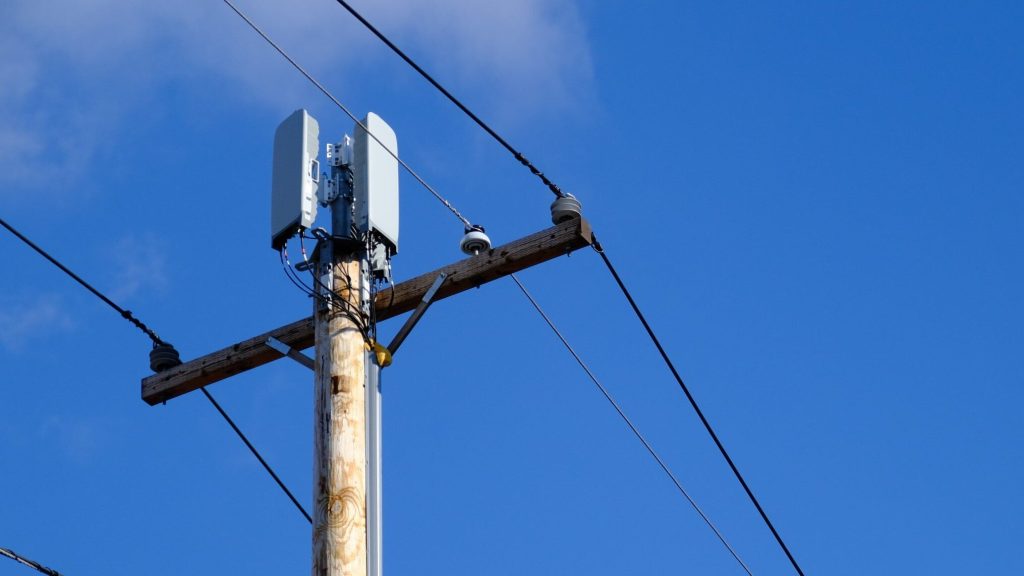At this point, you have probably heard about or seen ads online for 5G cellular data, but what exactly is it?
Simply put, it’s a new way of transmitting data from cell towers which is substantially different from the technology used for 4G (what most phones still use).
5G is the newest generation (G) of cellular data transmission, and with each generation comes new capabilities and innovations.

Each generation has opened doors for people to be creative and innovative. With 4G, the theoretical maximum data speed is 1Gig, though it’s difficult to experience anything better than 500Mbps in the real world. 5G’s theoretical top data speed is 10Gbps and has much lower latency (the time it takes to get data) than 4G. Devices will likely reach that theoretical max within a few years, under ideal conditions.
Do we need such speeds on mobile devices, rates which far exceed the typical wifi connection? For the vast majority of scenarios – no. What makes 5G exciting is the reduced latency. Usually, a cellular connection’s quality is FAR less than wifi, but with 5G, that will change. 5G offers connection stability and quality, which resembles wifi.
This high quality means gamers, streamers, and others in that realm can use 5G without a home internet connection. We may live in a world, say ten years from now, where cable or fiber internet become less popular because every device has a 5G radio and can be added easily to our cell plans. What will it take to make that a reality? Much higher data caps on mobile plans. Until we see 500 Gig to 1000 Gig data plans, this seems unlikely to catch on. Is this likely to happen? Probably not. What does that mean? It means the real benefits of 5G are unlikely to be realized before it’s replaced by 6G in 5 years.
So how does 5G perform so much better? It all has to do with the type of band of cell service operates on. Three bands cover the spectrum of cellular signals: low band, mid-band, and high band. Each has a tradeoff, which is why all three remain in use.

Low-band is what 4G and TV frequencies use, and so does first-generation 5G. This shared space can make advertising and icons for 5G on your phone feel misleading because when connected to low-band 5G, your speed closely resembles that of the final generation of 4G. 5G’s use of the low-band is also why phones with 4G technology can sometimes connect to a 5G network.
The mid-band uses the same frequencies as wifi but at a much larger scale. Some cellular signals are already in this band, which remains very open and underutilized.
With a higher frequency, the signal quality drops off sooner than that of lower frequencies. The range of mid-band is around half a mile for full strength but can reach around a mile. Implementing a way for someone to have mid-band coverage over a large area takes a lot of infrastructure, which is very expensive because you need more of it than with 4G (more cell towers), and the equipment is costly.
The high-band is the exciting area of 5G, where those theoretical speeds come into play. High-band, also known as millimeter-wave, uses frequencies similar to that of wifi 6. To date, they have been used mainly by point-to-point wireless data transmission systems to connect things like buildings and cell towers to the internet with permanent connections which feel like fiber.
The new phones that have come out recently advertised as compatible with 5G have new technologies inside them that allow them to connect to this particular band.

As we said before, the higher the frequency, the shorter the signal’s distance. High-band can reach close to half a mile with no obstructions. These higher frequencies come with another caveat: the signal can be disrupted by leaves, rain, walls, glass, cars, clothing, and even skin. So, you won’t see breakneck speeds unless there is a clear line of sight or you are very close to a 5G tower. How likely are we to always have line-of-sight? Not any time soon.
The most common places you’ll find high band 5G are at stadiums, college campuses, or parts of major cities.
Even though the super-fast 5G signal is not standard in most areas, the potential for innovation and new technology is still very much applicable. The most frequently talked about the most exciting place where 5G will come in handy is self-driving cars!

Having low latency is the main reason it will be so helpful for a network of self-driving cars since the time it takes to communicate between vehicles can be as low as 1 millisecond (ms), which is essentially instantaneous.
There are now two generations of iPhone and three generations of Android phones equipped with 5G, and more and more major metro areas are coming online with 5G. The next time you are near a central urban area, if you see a 5G connection status indicator on your phone, download the speedtest.net app and try it out for yourself!